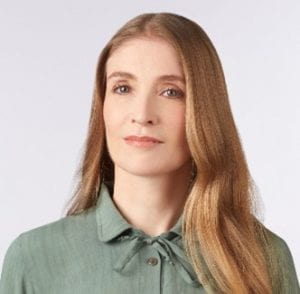“…Other people are also essential or detrimental for survival…I’m interested to see how the brain represents social others and how we navigate our social lives.”
 An interview with Daniela Schiller, PhD (Professor, Neuroscience & Psychiatry, Mount Sinai)
An interview with Daniela Schiller, PhD (Professor, Neuroscience & Psychiatry, Mount Sinai)
By: Michelle Johnson (4/26/21)
What questions are deeply interesting to you right now?
The first question I’m interested in is the neural basis of emotions and how the brain allows the modification of emotional memories. We learn about significant stimuli in the environment; we create emotional memories, and later retrieve these memories in a way that affects our behavior. It’s interesting to identify the mechanisms that evolved to allow us to flexibly shape our emotional reactions, behaviors, and memories. I’m interested in this question particularly because emotional memories affect our mental well-being and are a major factor in psychiatric disorders.
The second question is about the critical aspects of life that induce these emotions. One of these factors is social interactions. We learn about threats, such as snakes, spiders, airplanes crashing and so forth, but other people are also essential or detrimental for survival. They can be a source of threat but also a source of comfort. So I’m interested to see how the brain represents social others and how we navigate our social lives. I think these two questions of emotional learning and social cognition are very much related but mostly studied independently. I would like to explore the neural representation of other people as emotional stimuli.
Has studying this topic changed how you think about your own emotions and daily life?
The topics I’m studying are naturally relevant to our everyday life and our personal experiences. There’s the a conversation between the science and what I learn from it, and what I begin to observe daily in myself and other people. For example: the modification of memories; once you become aware of the dynamic nature of memory, you start observing the accuracy of your own memories.
What do you hope your research will lead in terms of translation to the real world?
I think that for many of us in the field, our primary goal is to promote diagnosis and treatment for psychiatric disorders. There is a general frustration that there’s still a big gap between scientific insights and clinical applications. The first reason is the communication between fields, which is getting better between clinicians and neuroscientists, and the other reason is the technology. Sometimes the techniques, tools and devices that are being used in science are just not applicable, at least not yet. All of this leads to a general frustration but also a motivation; this is one of the things I aspire to do, and I hope we, as a community, will resolve these issues and find ways to make the translation quicker and the gap narrower.
Was there anything that you think might have surprised a younger you when you were first starting out?
Sometimes when you have a very consistent direction, it seems like it was all planned, but actually it wasn’t. I was just switching from one short-term goal to another. That’s how I progressed—I went to the next step that I was most passionate about and that most captured in my curiosity, and I almost couldn’t resist doing it. In this sense it, you’re more like an artist, like a musician saying, “I have to write the song,.”
The surprising aspect of it is that you don’t really have to look far; actually, you have to look very close at what you’re really interested in. I think that without passion, it’s very hard to go through the life of a scientist. The other conclusion from this is that there is no one way to be a scientist, there are many, many versions. You can come from it from many different directions, have many different characteristics and personality traits, and all of these can be successful. It’s really about trusting what you want, what you bring, and going with it.
To learn more about Dr. Schiller and her work, click here.
Click here to go back to the “Interviews with Scientists” page.
